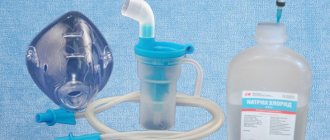Back in the 19th century, the Englishman Waller first used a device that studied the electrical activity of the heart. Of course, over the many years of service it has undergone many changes and improvements, but the basic principle of operation has remained the same.
Electrocardiograph
A little anatomy and physiology
The human heart consists of four chambers - two ventricles and two atria. The ventricles bear the main load, the walls of the atria are thinner. The right and left sections also differ from each other - it is easier to supply blood to the pulmonary circulation for the right ventricle than to push blood into the large circle for the left ventricle, therefore the latter is more developed and at the same time more susceptible to changes.
There are peculiarities in the work of the heart. These include:
- Automaticity is the ability to independently generate impulses.
- Excitability is the ability of the muscular system to become activated under the influence of an impulse.
- Conductivity is the ability to conduct an electrical impulse to contracting formations.
- Contractility is the ability of the heart muscles to contract and relax when exposed to an impulse.
- Tonicity – the heart retains its shape when relaxed.
Conduction system of the heart
The impulse arises in the cells of the atrial node, which is located on the border of the right atrium and the superior vena cava, passes through the atria to the border of the right atrium and the ventricle - the atrioventricular node is located there. At this point, the impulse is slightly inhibited, passes through the Hiss bundle in the interventricular septum and further along the Purkinje fibers in the two ventricles. Only this path of electrical impulse is considered correct and is capable of ensuring proper cardiac contraction. When conducting an ECG, electrodes that pick up impulses are placed at the place where the heart is projected onto the anterior chest, as well as onto the limbs.
During intrauterine development, the heart is formed from the mesoderm in the third week in a paired anlage, from which a tubular heart with a venous and aortic end grows, bending in an S-shape. The interatrial septum appears at 4-5 weeks of intrauterine development, the interventricular septum at 8, and as a result the fetus has a four-chambered heart. The foramen ovale (interatrial) closes only after birth, during the period of activation of the pulmonary circulation.
Patent foramen ovale
In children, the heart has its own structural features. The volume of the heart of newborns is only 22 cm³ and is located horizontally, taking the correct position only by the age of one year; the right atrium is much larger than the left. During the first year of life, the heart grows at an accelerated pace, increasing more in length than in width, and the atria are ahead of the ventricles in growth. At the age of approximately 2 to 6 years, the difference in the growth rate of the ventricles and atria is smoothed out, and all sections grow evenly. The weight of the heart per year is approximately 50 grams, which is 2 times more than that of a newborn. At the age of 5, the mass of the heart triples, at 9-10 it increases 5 times. At approximately 11-14 years of age, a child’s heart catches up in size to an adult’s; in adolescents, the heart mass is 10 times greater than that of a one-year-old child, and the volume is 3-3.5 times greater.
The work of a child's heart also has its own characteristics. Heart rate in newborns reaches high values - 130-140 beats per minute, by the end of the first year of life - 110-120, by the 5th year of life it decreases to 95, and 80-85 in adolescents. This is explained by the special nervous regulation of heart activity in childhood, as well as a more intense metabolism. The younger the child, the lower the blood pressure and the speed of the blood circulation - in newborns, a full circle takes 12 seconds, in adolescents it is already 19-20.
Indications for ECG in different population groups
The ECG method is a very common diagnostic method that allows us to identify many diseases in both children and adults.
- Clinical examination of newborns, children of early school age, adolescents, athletes.
- Diagnosis of certain diseases - coronary heart disease, myocardial infarction, arterial hypertension, patent foramen ovale, developmental defects.
- Routine examination of athletes. People who exercise put more strain on their hearts, putting their heart at greater risk.
- Identified pathological noises in children.
A cardiologist performs auscultation of a child's heart
- Past severe infections, viral diseases in newborns.
- Predisposition to cardiovascular diseases.
There are the following methods for conducting ECG in children:
- ECG with stress - the patient is given medication or physical stress to study the functioning of the heart in a stressful situation; in children it is more often used to identify rhythm and conduction disturbances.
- Daily (Holter) ECG - a special device is placed on the patient’s chest, recording any deviations from the normal functioning of the heart. The holter is installed for a day, and is convenient because it allows you to monitor the work of the heart muscle in everyday conditions during the day, and any, even minor, deviations from normal indicators are recorded. The dimensions of the device are 5x8 cm, and the weight is only 50 grams, so it will not cause serious inconvenience to the child.
- Transesophageal ECG – if other methods are not informative or impossible.
How to do an ECG for children
Several small plates or suction cups are attached to the baby's body. They are installed on the chest area, hands and feet. The study is carried out while lying down.
The child must lie still while the device is operating. If the child is small, his parents are with him. Before the procedure, outdoor active games and sports activities are excluded, unless otherwise specified by the attending physician. If necessary, a stress ECG may be prescribed.
For newborns, special electrodes are used that are carefully attached to the skin without damaging it. Then the baby needs to be swaddled to ensure the baby's immobility. Conversations and laughter are also not advisable. It is possible to use special belts with built-in sensors.
To exclude respiratory arrhythmia, the specialist may ask the child to hold his breath during the examination. This method is practiced with children over 7 years old. The entire standard diagnostic procedure takes no more than 10 minutes.
How does an ECG work?
The process of taking a cardiogram takes no more than 10 minutes and does not require any effort from the patient. When conducting an ECG in newborns, a necessary element is swaddling to ensure greater immobility. The mother undresses the one-year-old child down to diapers and places him on a clean diaper; the nurse lubricates the electrode sites with a special solution and places the sensors. As a rule, children are frightened by such manipulations, so the main task of the mother is to distract her child; for this it is recommended to take her favorite toy with her. Preschool children and adolescents easily tolerate this procedure.
Features of the event
An ECG for a child is performed in the same way as for an adult. The difference lies in the use of relatively small skin electrodes, the structure and shape of which takes into account the anatomical features of the baby. In our clinic, instead of traditional “suction cups” for children, we use “sticker” electrodes, which eliminates unpleasant sensations during ECG recording. The procedure involves the use of a certified device that has many functions and capabilities.
One of the important conditions is the correct mood of the baby, his calmness. This requires the right atmosphere, confidential communication with the doctor, and a friendly attitude towards the child. If these conditions are not present, the study is difficult to consider informative - a crying little patient may simply not allow him to be examined, and tachycardia, which occurs during severe anxiety, will distort the picture.
The Family Doctor clinic employs specialists who can find an approach to patients of any age. Creating a favorable environment ensures the reliability of the survey results.
How to interpret an ECG?
In order to understand what is shown on the tape and decipher all the indicators, you need to have a special education, since not every doctor can correctly determine whether a cardiogram is normal or not.
Each electrocardiogram has waves - Q, R, S, T, U and segments - PQ and ST.
- The P wave is the phase of atrial depolarization, weakly expressed in athletes.
- QRS – ventricular depolarization.
- T – ventricular repolarization.
- The U-wave is slightly pronounced and means repolarization of distant parts of the ventricles.
When conducting an ECG cardiogram, 12 different leads are used:
- Standard – I, II, III.
- According to Goldberg - 3 reinforced single-pole.
- According to Wilson – 6 thoracic reinforced unipolar ones.
6 chest electrodes
When analyzing an ECG, the area of the teeth, the direction of the isoline and many of the following indicators are calculated:
- Heart rate is the heart rate; it averages 60-80 beats per minute. A decrease in this indicator indicates bradycardia, and an increase indicates tachycardia. In children, the heart rate is 110-130 beats per minute; in athletes, tachycardia is more often detected.
- The correctness of the heart rhythm - the distance between the R-teeth should not differ by more than 10%; if the difference is greater or less, then arrhythmia is diagnosed.
- The location of the electrical axis of the heart (EOS) is a vector that coincides with the direction of the anatomical axis. Normal EOS is vertical or semi-horizontal, while taking into account a person’s build – in heavier people and athletes the heart is located more horizontally, in asthenic people it is more vertical. This indicator allows you to exclude or identify the presence of myocardial hypertrophy and conduction disorders. Newborns are characterized by a strong deviation of the electrical axis to the right side; in adolescents, the deviation of the axis decreases to 35 degrees.
Three options for the constitutionally determined provision of EOS
- PQ segment – reflects the physiological delay of the impulse in the atrioventricular node, lasts 0.02-0.09 seconds; deformation of the segment or change in duration may indicate ventricular extrasystole, AV block. In children, this interval is shorter, and in athletes, conduction in this interval is slow.
- The QRS complex is studied - its average duration is 0.1 s; slowdown indicates a possible myocardial infarction, His bundle block. In children the segment is shorter, in athletes it is longer.
- The ST complex - complete excitation of the ventricles - is located along the isoline, its displacement indicates myocardial ischemia or the onset of a heart attack.
- Analysis of the T wave - a decrease in excitation in the ventricles - is normally above the isoline; its decrease also indicates a heart attack.
Explanation of the examination
The essence of electrocardiography is to determine the electrical potentials of cardiomyocytes detected by sensors. Electrical impulses are converted into a graphic image. Using an ECG, you can analyze the features of the anatomical position of the heart, identify heart rhythm disturbances, suggest the presence of enlargement of the heart chambers, and assess the quality of myocardial nutrition. An experienced doctor will decipher the results and issue a detailed conclusion, which is accompanied by a graphic image (electrocardiogram film).
How is ECG different in children?
Carrying out electrocardiography for a child
As soon as the child turns 1 month old, the mother brings him to the clinic for a mandatory examination by a cardiologist, and this examination necessarily includes an ECG. In children of early school age and in adolescents, the growth of the musculoskeletal system often outstrips the development of the heart, so the functioning of the heart in childhood is characterized by its own age-related characteristics. These include:
- Predominance of the right ventricle over the left in newborns.
- Presence of respiratory and sinus arrhythmia.
- The Q wave is deep in standard lead III.
- Incomplete blockade of the right bundle branch.
- Movement of the rhythm in the atria.
- Standard interval lengths increase according to the age of the children.
- The P wave is taller due to the size of the child's atria.
- Respiratory and sinus arrhythmia in newborns.
Where can I get an ECG for a child in Moscow?
If your child has received a referral for an ECG, then this is not a reason to panic. The procedure is completely painless and will not take more than 10 minutes. Research is carried out using modern technology and gives very accurate results. ECG in children has many features. Our clinic specialists have extensive experience in reading cardiograms. The Medicine Clinic is accredited according to the most stringent American standards of medical care and is ready to provide you with:
- diagnostics using the latest equipment, which is used in the best clinics in Europe;
- service at the level of foreign medical centers;
- consultations and treatment from the best specialists in Europe and Russia.
In the modern Meditsina clinic, you can do a paid ECG for your child and order an interpretation from an experienced cardiologist. You will receive reliable information about your baby’s health condition and, if necessary, receive timely treatment.
Features of the heart in athletes: where is the norm and where is the pathology?
Athletes may experience physiological changes on the ECG
People involved in sports also have their own characteristics in the ECG. It is believed that every second electrocardiogram in athletes is pathological due to the increased load. As a result of sports, the volumes of the heart chambers develop and the thickness of the myocardium increases. Also, athletes are characterized by early repolarization of the ventricles, and the T waves are more elongated.
Do not neglect your health, do not ignore scheduled examinations, because even such a simple study can show significant disorders in the body of any person, from newborn children to athletes.











